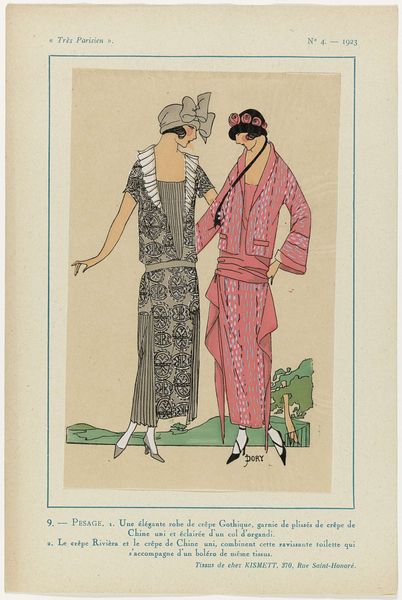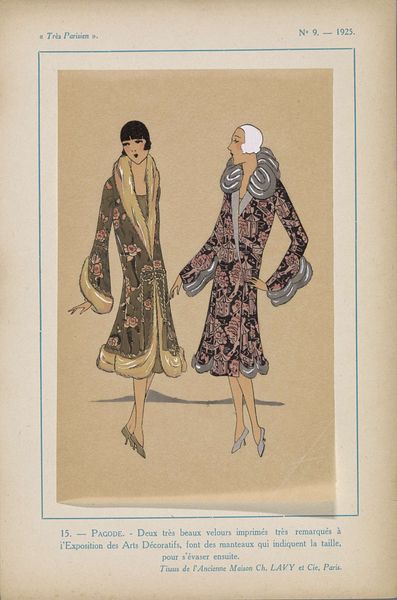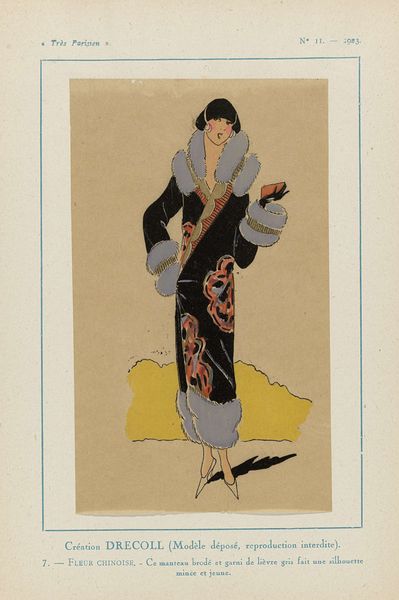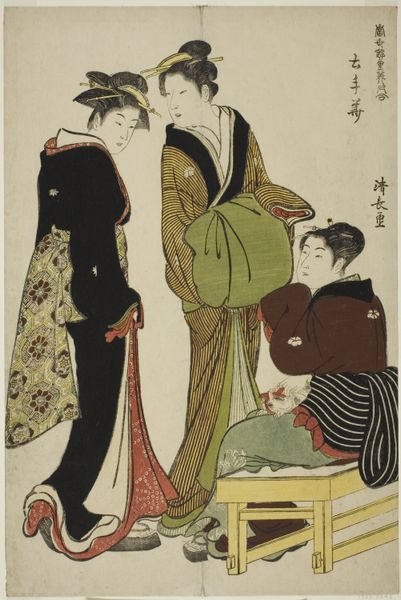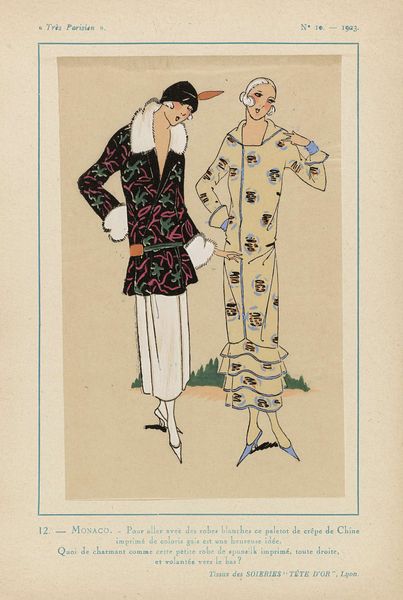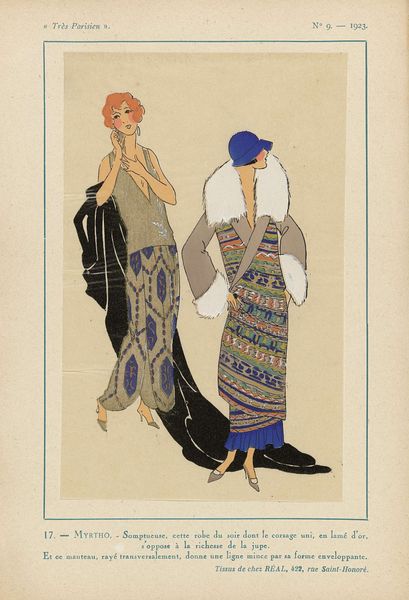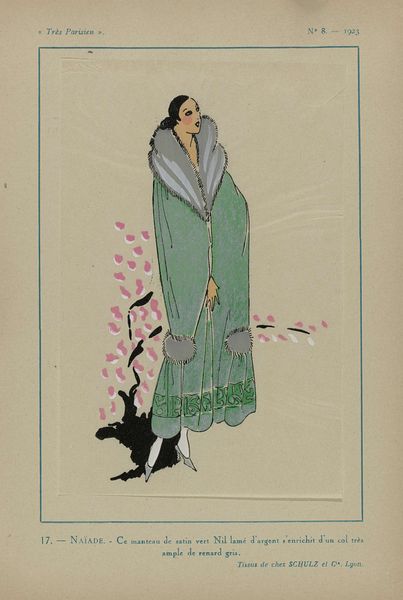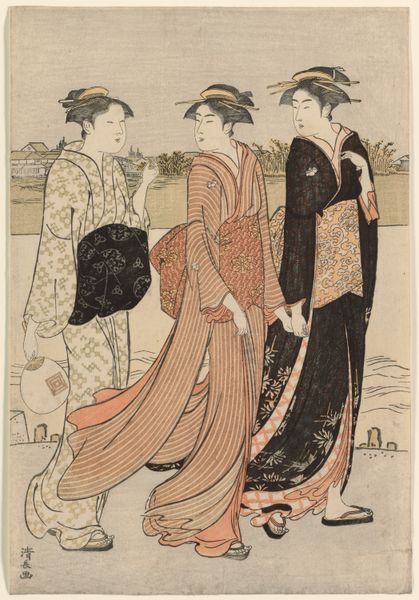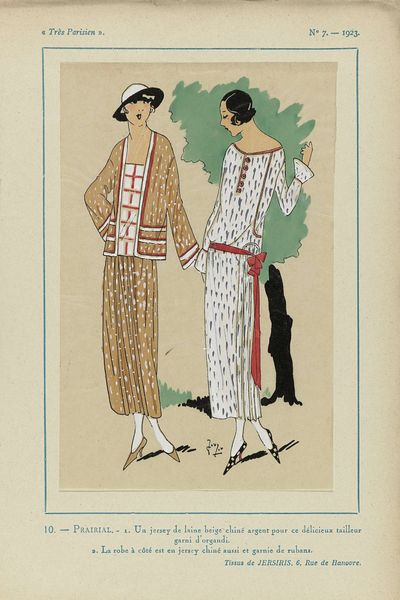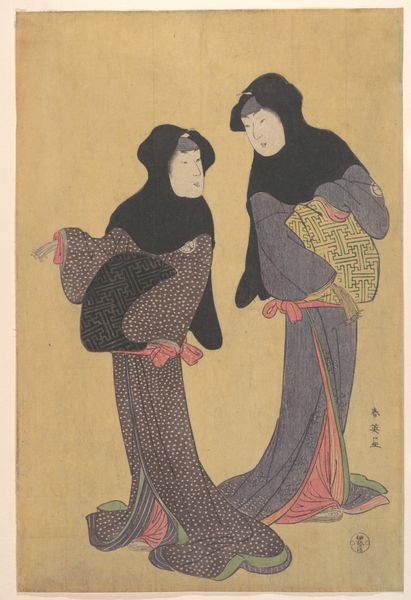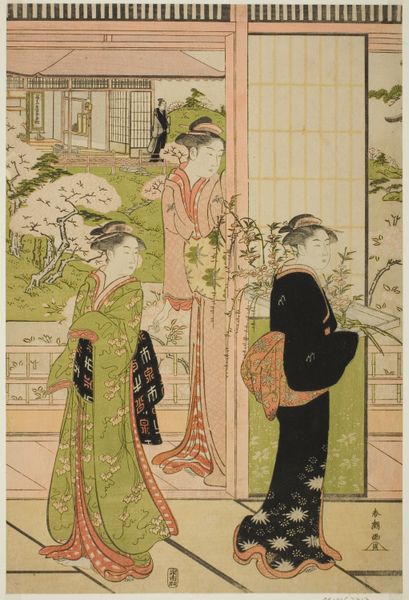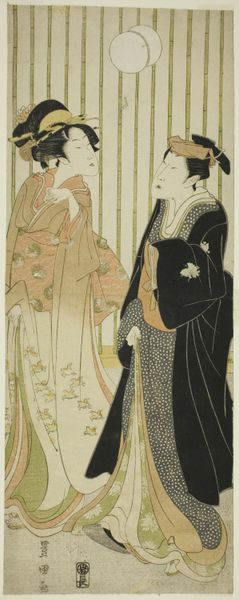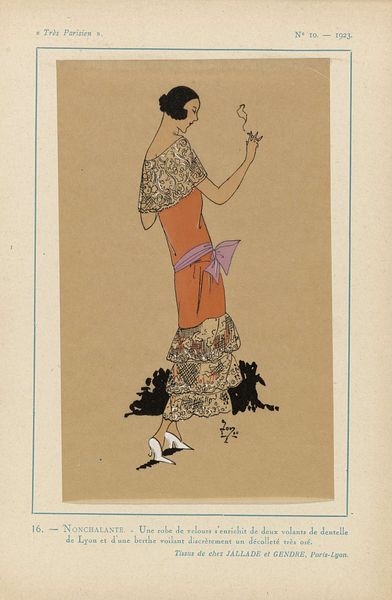
Dimensions: height 269 mm, width 180 mm
Copyright: Rijks Museum: Open Domain
Editor: This print, “Très Parisien. La Mode, Le Chic, L’Élégance” by J. Dory, dates to 1923. It’s a graceful watercolour illustration, almost a fashion plate, showcasing Art Nouveau sensibilities. The colours feel muted yet somehow glamorous. How do you read this piece? Curator: It offers a glimpse into the aspirations and anxieties of women in the post-World War I era. It reflects a desire to embrace modernity and individual expression through fashion, yet remains confined by societal expectations. Consider the gazes of the figures – averted, perhaps indicative of a discomfort with direct engagement, of women navigating a patriarchal society while pushing boundaries. Editor: I hadn't thought of it that way. I was so caught up in the outfits! Is the styling significant? Curator: Absolutely. The dresses, cloche hats, and fur accents indicate a certain social status, pointing to a consumer culture that caters to a wealthy elite. Notice how their bodies are stylized, almost androgynous. Think about how these choices intersect with ideas of gender and the 'flapper' aesthetic as a symbol of female rebellion. The text mentions oriental-styled fabric. Why orientalism in the '20s? Editor: Is it about cultural appropriation, like the fascination of that time? Curator: Indeed. That craze highlights issues of cultural exchange, power dynamics, and the exoticization of non-Western cultures within a colonial context. But let’s not forget about the fashion industry itself, Mireille... were these truly 'chic' for every woman, or aspirational images perpetuating exclusionary ideals? Editor: So this print is more than just a pretty picture, it holds layers of social and political commentary. Curator: Exactly. It prompts us to consider the complexities of identity, class, and cultural exchange, inviting a more critical engagement with what we see, beyond surface level aesthetic appeal. Editor: That gives me a whole new perspective on this print. Thank you.
Comments
rijksmuseum about 2 years ago
⋮
Très Parisien promoted itself as chic and elegant. Between 1920 and 1936 it presented creations by such couturiers as Chéruit, Premet, Philip et Gaston, and Lanvin. The young, svelte models are all ultra-modern, shown talking on the phone, smoking and playing tennis. The illustrations also show that over the course of the 1920s, skirt lengths had risen to just below the knee, before dropping back down to calf length in the 1930s. The small plates were printed on transparent paper using a stencilling technique known as en pochoir and then hand coloured; many of them are unsigned. The signature ‘Joujou’ belonged to Germaine Paule Joumard, who was the director of Très Parisien, as well as one of the magazine’s illustrators.
Join the conversation
Join millions of artists and users on Artera today and experience the ultimate creative platform.
